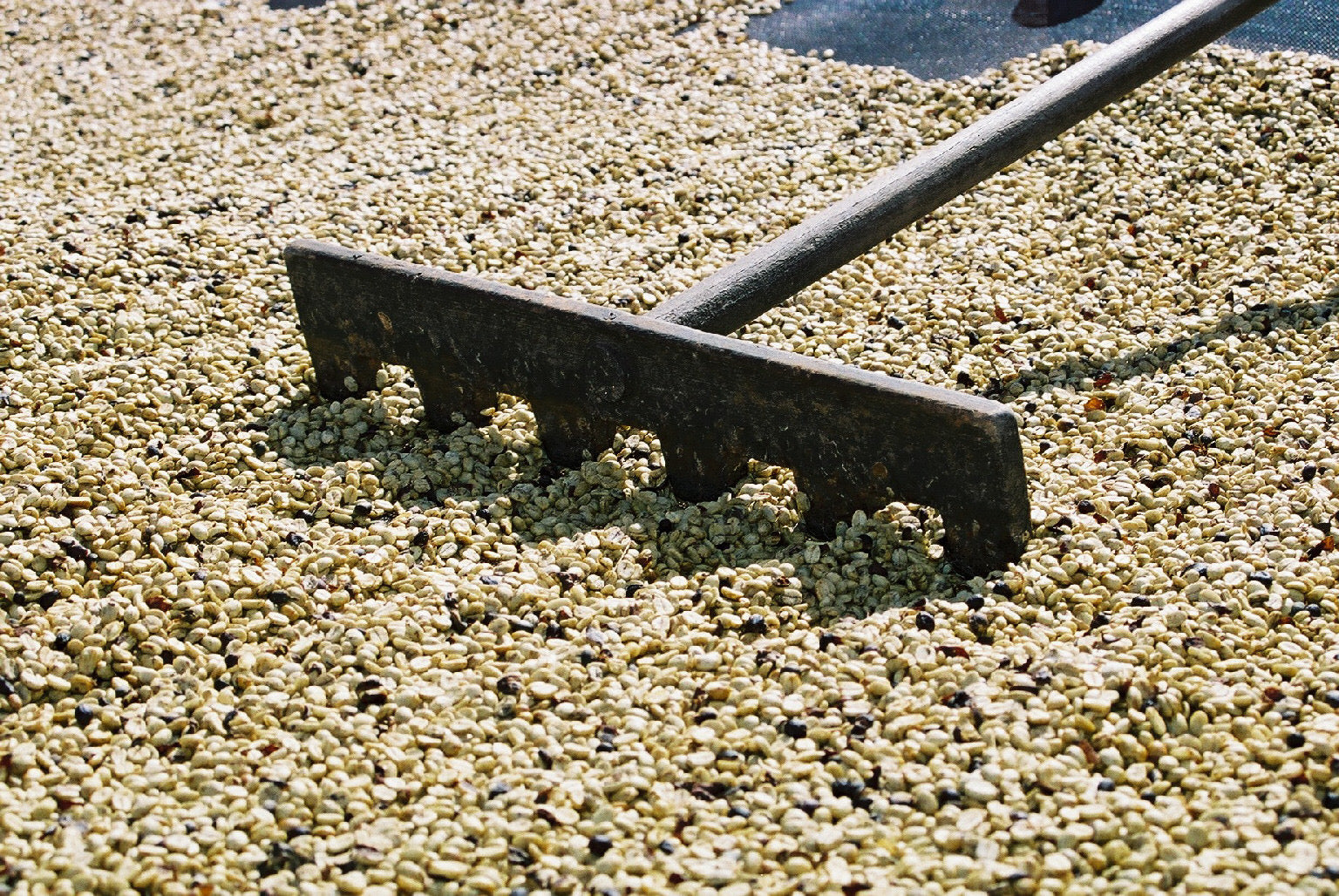We have just finished this year's coffee harvest at our family farm in Brazil. It is our winter season and the fact that this is our dry season plays a very important part in coffee processing.

Nowadays there are specific details about how specialty coffee is processed, whether on bags, labels, or in descriptions. But what do these terms really mean, and why does coffee processing matter? Common methods like natural, washed, pulped natural (aka honey), processes are used to handle freshly picked coffee cherries at the farm.
Understanding these terms can be challenging until you see the coffee plant and fruit up close, and observe the processing steps firsthand. Each stage requires careful attention and patience from farm workers.

After the Harvest
Once coffee cherries are harvested, they undergo processing, which involves washing, fermenting, drying, and sorting. The two main categories of processing methods at our family farm are “natural” and “pulped natural” coffees.
Natural / Dry Process
Natural processed coffee requires more time than the washed process. After picking, unripe cherries are removed by hand, and ripe cherries are dried on patios with the fruit still intact. The cherries dry for over a week, during which they are manually turned to ensure even drying. This method requires expertise to prevent over-fermentation. Once dried to a specific moisture content (10-12%), the coffee is hulled and sorted before bagging and exported. Though there is a higher risk of defects, natural processed coffee is often prized for its complex fruit flavors.

Pulped Natural Process
Developed in Brazil, the pulped natural process aims to produce high-quality coffee with less water than the washed process. Cherries are density sorted in flotation tanks, with unripe cherries removed. The ripe cherries are then mechanically de-pulped, leaving a thin layer of mucilage on the beans. The beans are then dried with this thin layer intact, allowing sugars to break down. The result is in increased sweetness and body in the final product. After drying, the coffee is hulled and sorted as described earlier.

Washed Process
At the moment, we are starting to experiment with this method, as it is not very common in Brazil. However, it is widely used in Africa and Central America. In the washed process, coffee cherries are first sorted in a flotation tank to remove under-ripe cherries, which float, while ripe cherries sink and are selected for de-pulping. After de-pulping, the cherries are fermented in water for 18-24 hours, during which naturally occurring yeasts and bacteria break down the mucilage layer on the seed. Once this process is complete, the mucilage is washed away, leaving the seed's flesh completely removed before drying. This method reduces the risk of defects and results in a more predictable flavor profile compared to natural processed coffees. We find this process usually has more brightness - bringing out floral and fruit notes.
Taste the difference in your cup
We use natural, pulped natural and washed processed coffees from our family farms and origin partners, and tasting them side by side is always a fascinating and insightful experience. Natural coffees often have nutty, sweet (caramel, chocolate) profile with fuller bodies, showcasing sweet flavours and low acidity. For the pulped natural, there will be a more fruit-forward characteristic. In contrast, washed coffees are usually brighter and more citric, with higher acidity and floral undertones, featuring prominent notes of lemon and grapefruit.
There is no right/wrong method - they each have their own characteristics and the end flavours will depend greatly on the roasting profile as well.
In the end, selecting a profile, is really up to your preference and what flavours you enjoy the most.


